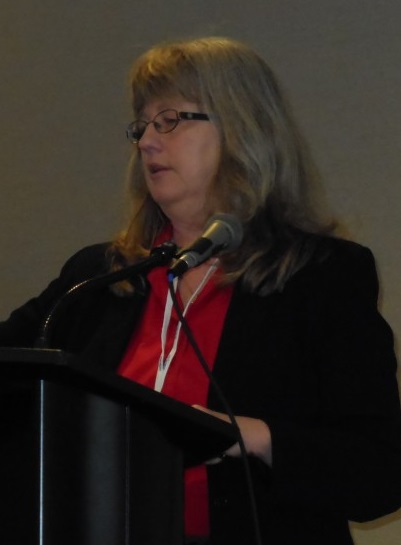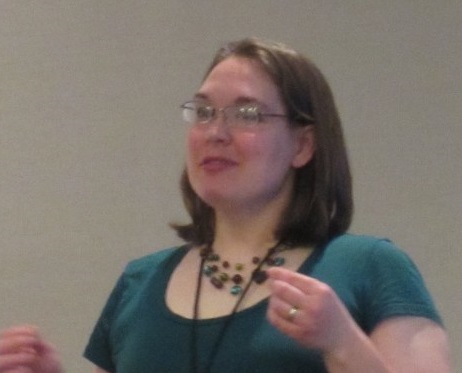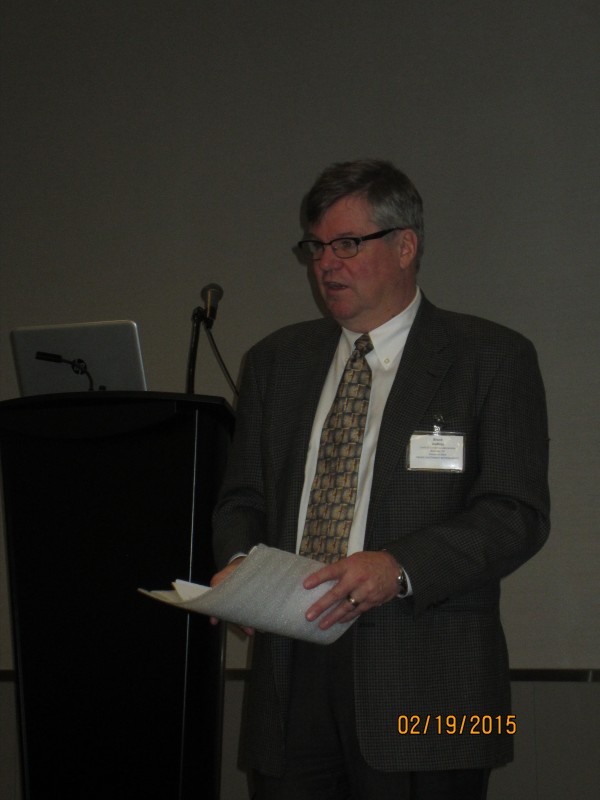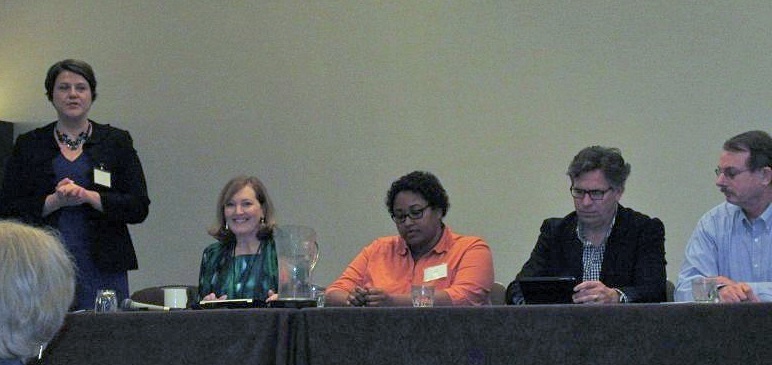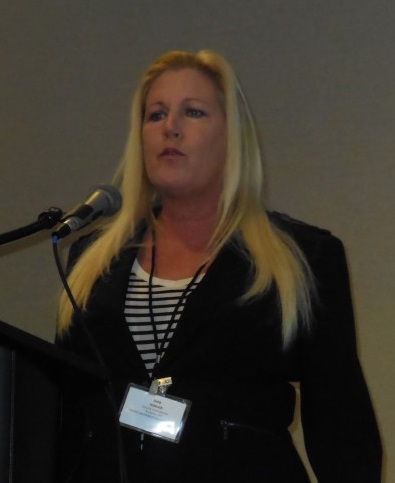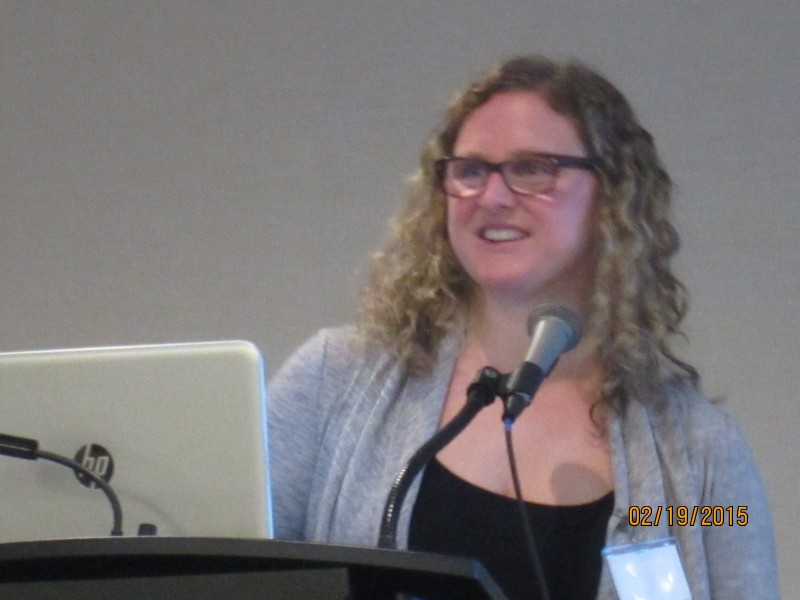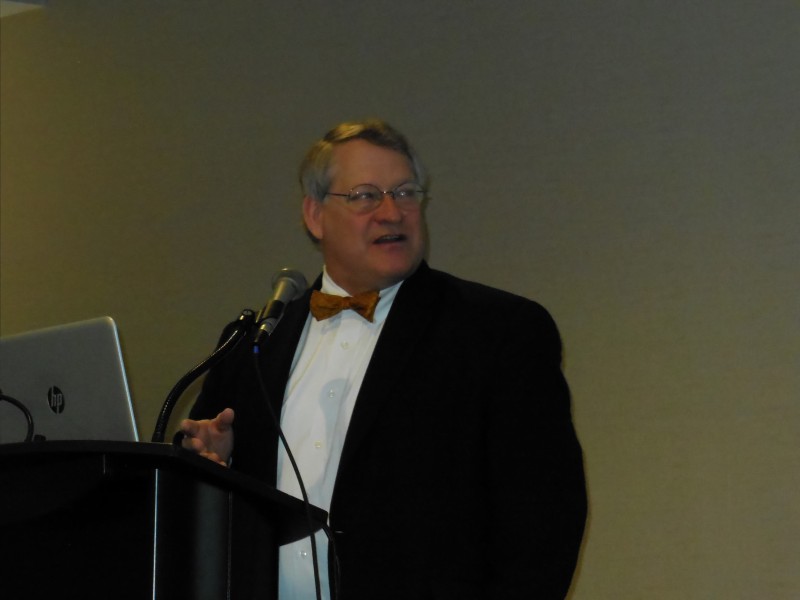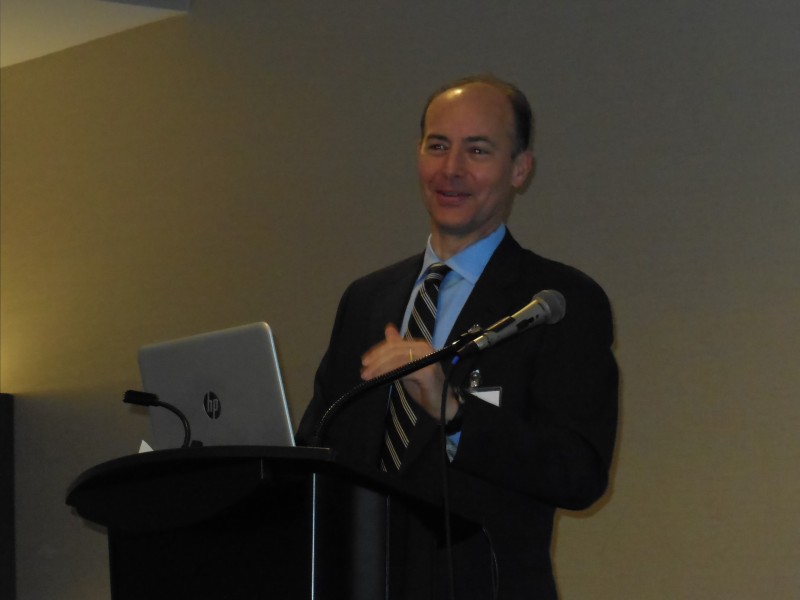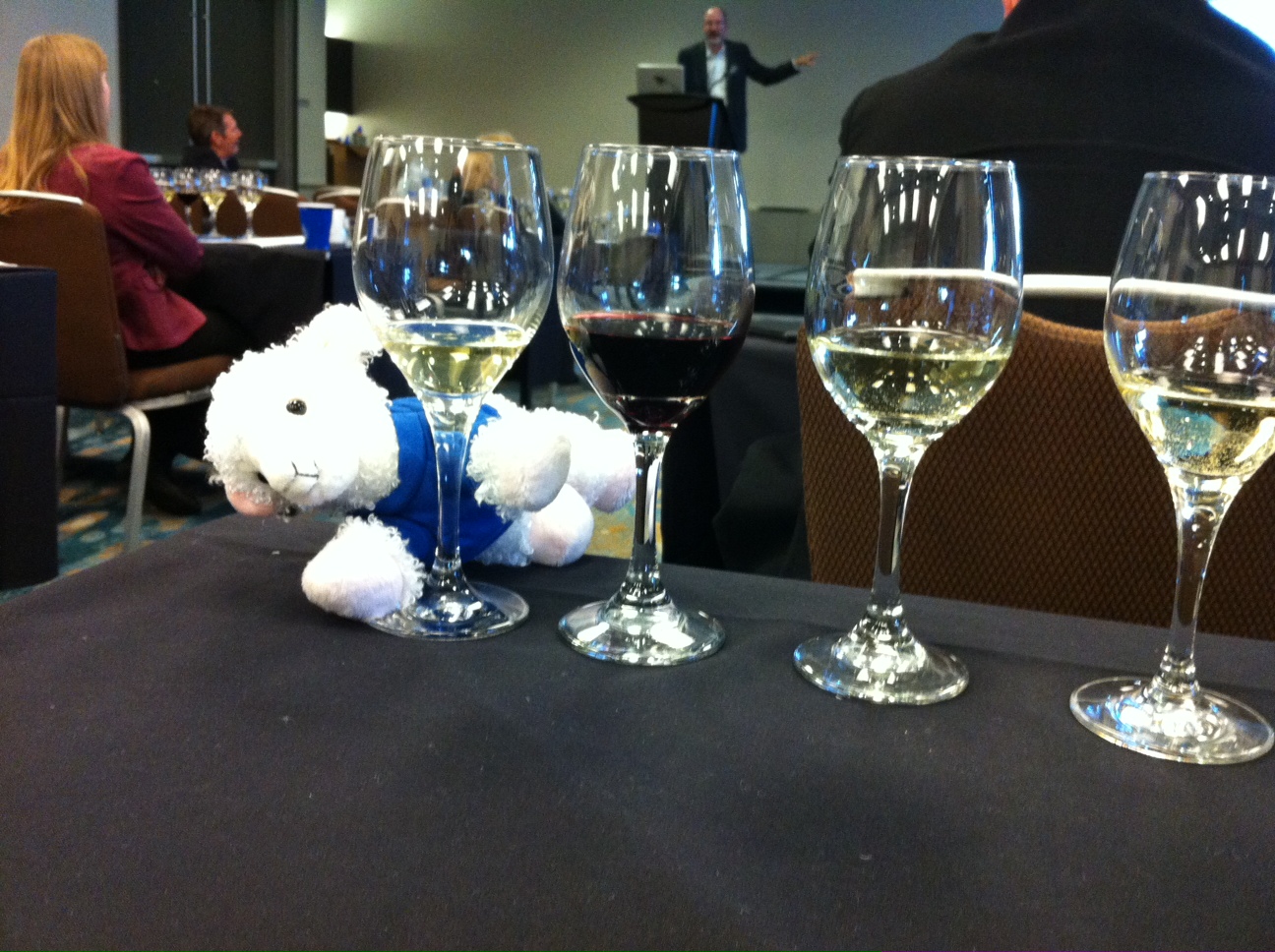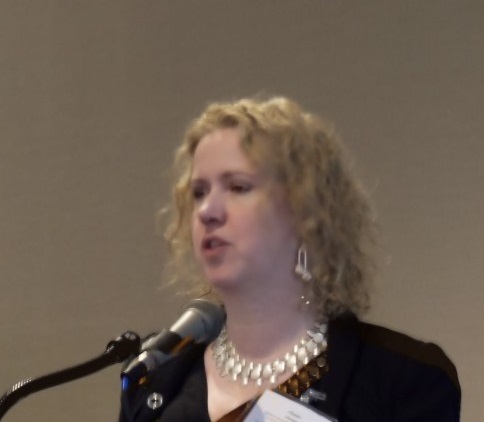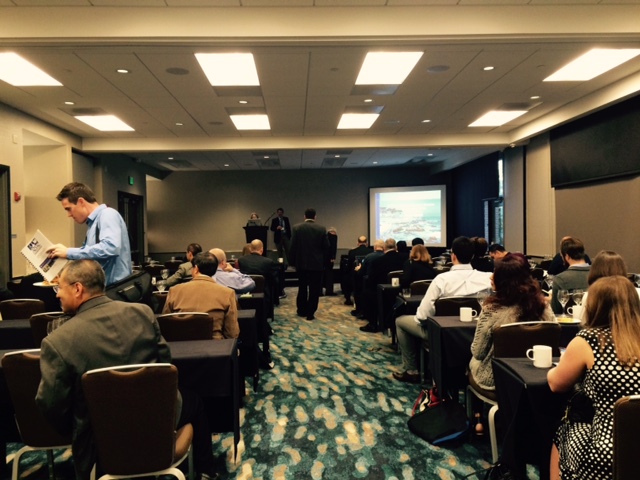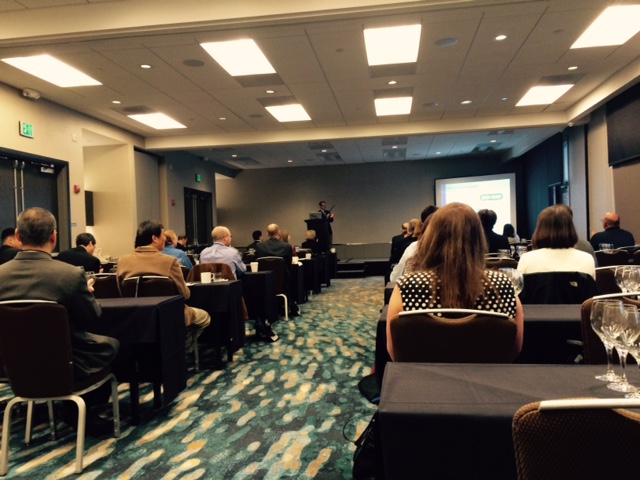Food Safety
The Pacific Southwest Section held their Annual Meeting on February 18-19, 2015 at the HYATT Regency Conference Center, Monterey, CA.
As the fog rolled into Monterey Bay, the Pacific Southwest Section (PSW) met at the Conference Center on the campus of the Hyatt Regency to discuss the urgent topic of Food Safety. The symposia highlighted several important initiatives of AOAC INTERNATIONAL. The Section Executive Committee wanted to bring home to the local members the achievements and opportunities available now through the Stakeholder Panel process.
The initiatives discussed were:
- The Dietary Supplement Program for the National Institutes of Health directed by the Stakeholder Panel on Dietary Supplements (SPDS).
- The Heavy Metal Speciation Program under the Stakeholder Panel on Strategic Food Analytical Methods (SPSFAM).
- The Fresh Produce Initiative under the International Stakeholder Panel on Alternative Methods (ISPAM).
Both the SPSFAM and the ISPAM are reinvestment initiatives supported by AOAC INTERNATIONAL funds.
Keynote Address: The Challenge of International Food Fraud
Dr. John Spink, Director and Assistant Professor, Food Fraud Initiative, School of Criminal Justice, Michigan State University, brought home The Challenge of International Food Fraud by emphasizing The Role of Analytical Chemistry in Food Fraud Prevention. This was a comprehensive, thought-provoking kick off to the meeting. A key factor in dealing with food fraud at the regulatory level is the difference in focus between the US and countries that follow ISO Security Management Systems. The US FDA focuses on prevention of adulteration that is their mandate. The ISO system looks to ensure that items—including food—are “genuine”. Under ISO TC 247, Fraud Countermeasures and Controls, ISO 12931 authentication is defined as the “act of establishing whether a material good is genuine or not”. Dr. Spink has a unique ability to leverage his large network of colleagues both at MSU and beyond to broaden the knowledge base and the analytical tools available. For those interested in pursuing further education in the area of Food Fraud, Dr. Spink pointed to a number of programs—including Certificate and Degree programs—available online through Michigan State University.
The Update: The AOAC Stakeholder Panel on Dietary Supplements
Dr. Joseph M. Betz, Director, Dietary Supplement Methods and Reference Materials Program, Office of Dietary Supplements, National Institutes of Health, Bethesda, MD started the discussion with an Overview on the NIH-AOAC Dietary Supplements Collaboration. The AOAC relationship with NIH-ODS is a process that stretches over a dozen years and multiple contracts. The products that have been delivered to the NIH are quite substantial. (2002-2008)
- Fifteen collaboratively studied methods.
- Significant infrastructure development:
- the coordination and planning of committee activities, community building
- the development and implementation of electronic peer review of proposed methods.
- The development and implementation of AOAC courses on designing and conducting collaborative studies and single laboratory validation of analytical methods. (2009-2011)
- Enhanced OMA Appendix K: Guidelines for Dietary Supplements and Botanicals
- AOAC Guidelines for Validation of Botanical Identification Methods (JAOAC 95:268–272)
- Probability of Identification: A Statistical Model for the Validation of Qualitative Botanical Identification Methods (JAOAC 95:273-285)
- An additional 10 methods of analysis are in the process of validation and acceptance into OMA.
(2013 to present)
- Standard Method Performance Requirements (SMPR) for 25 high-priority ingredients
- Convene expert review panels to select candidate methods for potential approval as First Action Official Methods of Analysis.
Jana Hildreth, Chair of the Chondroitin Working Group (WG) and Director, Technology and Scientific Affairs, Synutra International, covered a number of issues that the Chondroitin WG has addressed. At this time, they are poised to recommend two SMPRs—one is for screening methods for adulterants the other is for the determination of total chondroitin sulfate. The advantages and disadvantages of currently available methods of analysis were also reviewed.
Dr. Aniko Solyom, Chief Scientific Officer, GAAS Corporation and a member of the Anthocyanin Working Group emphasized the difficulty in identifying the source of anthocyanins in dietary supplements. She pointed out that proximate analyses for total anthocyanins based on color are ripe for fraud. The HPLC profiles of anthocyanins from blueberry, bilberry, acai and grape among others were discussed. The WG has focused on method performance requirements that will allow the laboratory to identify the source of the anthocyanins claimed on the label. Inclusivity and exclusivity panels have been identified. A dispute resolution method is needed.
James Neal-Kababick, Laboratory Director, Flora Research Laboratories, Grants Pass, OR brought the Section up to date on the activities of the Phosphoesterase Type-5 Inhibitors (PDE-5) Working Group. The chief problem that manufacturers in this area run into are the 100’s of analogues of the approved drugs that can spoof the analytical tests. It is a lucrative and fast growing area of fraud. The SMPRs developed by this WG covered three areas. First, the identification of PDE-5 inhibitors defines a reference method for dispute resolution. It calls for the identification of PDE-5 inhibitors in dietary ingredients and supplements. A second reference method for dispute resolution is needed to quantitate PDE-5 inhibitors in dietary ingredients and supplements for use in testing laboratories by trained technicians. And finally, a screening method for PDE5 inhibitors to allow routine qualitative surveillance of dietary ingredients and supplements by a trained technician.
As these WGs complete the tasks assigned, the SPDS forged ahead to identify additional priority ingredients. Dr. Paula Brown, Director of Applied Research, British Columbia Institute of Technology, presented The Next Four Dietary Supplement Ingredients. They were identified as Cinnamon, Ashwaganda, Kratom and Folin C. These WGs have already completed the SMPRs which are open for comment on the AOAC website. The finished SMPRs will be presented at the 2015 Mid-Year Meeting March 16-20 and submitted for approval by the SPDS. In her presentation, Dr. Brown gave a clear, comprehensive overview of the current standard setting and conformity assessment processes of AOAC.
Special Training Session: The Chemistry Underlying Wine Sensory, Quality and Authenticity
The Pacific Southwest Section was delighted to have the expert talents of Dr. John H. Thorngate, Director, Sensory Department, Constellation Brands, Inc., to lead the group through The Chemistry Underlying Wine Sensory Quality and Authenticity. Wine is defined by more than the analytical composition. It is apparent that the tiny fraction of volatile compounds in the finished wine drive the perceptions of drinkability, quality and authenticity. Four wines were selected as exemplars. First for specific characteristics of the grape Dr. Thorngate chose to compare a New Zealand Sauvignon Blanc and a Chilean Carmenere. To demonstrate the winemakers art a finished, oaked California Chardonnay was compared to a tank sample Chardonnay prior to wood treatment.
Food Testing for Metals—Recent Issues and Developments
Michelle Briscoe, President/CEO, Brooks Rand Labs chaired the session and presented Updates from the AOAC International Metals SubGroup of the Contaminants Community. Ms. Briscoe outlined the status of the Heavy Metal in Food methods (2011.09,Annie Carter 2013.06 and 2014.XX—an ICP-MS method corresponding to SMPR 2012.007).
Annie Carter, Vice President of Operations, Brooks Rand Labs, presented the 2nd Annual International Intercomparison Study for Arsenic Speciation in Food. This round of testing used the lessons learned from the first (2013) round. Notably, the matrices chosen were challenging—cocoa, white rice flour, seaweed snack, fin fish tissue and shellfish. The participants were requested to include information on the methods used with their results. Standard reference materials were included to assist in evaluating the methods used.
Dr. Jenny Nelson, Agilent Technologies and Adjunct Professor in the Department of Viticulture and Enology at University of California, Davis presented Nanoparticles in Food. This presentation brought to light the contamination that comes from food packaging and storage practices.
Rounding out the session, James Neal-Kababick discussed Why Just Testing for the Big 4 (Hg, As, Cd, Pb) Isn’t Enough. Mr. Neal-Kababick explored the history of heavy metal testing in dietary supplements, the regulations requiring that testing and evidence that intentional as well as accidental toxic metal contamination has and will continue to occur.
Microbiological Issues in Produce
For the first time in about a decade, the PSW included a microbiology session. It was designed to take advantage of the heart of the Salinas Valley—to explore the unique testing challenge of fresh produce. The Chairs were Erin Crowley, Microbiology Research and Development Supervisor, Q Laboratories and Vice-Chair of the AOAC Official Methods Board and Brooke Schwartz of Brooke Schwartz Consulting, Chair-elect of the AOAC Research Institute and Co-Chair of the AOAC Stakeholder Panel on Produce Safety.
Ms. Schwartz led with the AOAC Produce Stakeholder Panel Overview that gave the status of the engagement of AOAC with the industry.
Dr. Peyman Fatemi, Technical Director, AEMTEK Inc. discussed the cogent need for modern sampling guidelines for salmonella in leafy greens. Current sampling protocols were developed for processed foods, where the assumption of “contamination uniformly distributed” is likely to be valid. Published studies and industry testing has demonstrated that field contamination, when it occurs, is most likely to be sporadic and not uniformly distributed. Furthermore, a single “positive” condemns the whole field. Also, negative test results in the field are meaningless—a future “positive” invalidates the field test results. Sampling to prove “pathogen-free” is largely pointless and not cost effective. Dr. Fatemi argued that a statistically valid sampling plan and eventually, a non-zero public health performance standard will have to be developed. He recommended the completion of the Sampling Plan for Salmonella in Leafy Greens as an essential first step in achieving this goal.
Ms. Crowley presented the Standard Method Performance Requirements Update (Experience in defining SMPRs for microbial analysis). These were the first SMPRs drafted for a microbiological purpose. It was key to align the definitions with AOAC Appendix J and with ISO 16140. Other key elements were the use of modern statistics, identifying that a rapid test method is essential and intelligently defined inclusivity/exclusivity panels.Farm
Dr. Trevor Suslow, Extension Research Specialist for the Postharvest Technology Research and Information Center at the University of California, Davis has a unique laboratory—the farm itself. He discussed how common environmental factors confound microbiological testing. Dr. Suslow illustrated that validation of molecular detection platforms for pathogens on fresh produce should be done in a context that considers both abiotic and biotic phyllosphere interactions on target pathogens that affect survival and adaptation. Extended enrichment in combination with an adequate sample mass and broth volume can minimize the risk of false negatives. And liquid composites are a more effective strategy to maximize the probability of detection by molecular detection platforms than increasing sample mass. As one observer noted, Dr. Suslow’s presentation made it clear that testing for contamination “should not be an end in itself.” The regulators need to look at what “value testing adds to the overall safety of the food product.”
The session was capped by a panel of Fresh Produce Industry experts—Bob Mills, Director of Food Safety/Quality Assurance, for the Harbinger Group, LLC; Willette Crawford, Food Safety Expert; and Drew McDonald, V.P. Quality, Food Safety & Regulatory Affairs, Church Brothers Produce. They engaged with the Chairs and the audience in a lively panel discussion on issues in sampling fresh produce for microbiological contamination. Many observers noted that the candid exchange of ideas was priceless. The industry needs (1) a statistically sound sampling plan; (2) methods of detection that can be completed within a single shift, are not prohibitively expensive and can be used by non-technical personnel; and (3) a neutral entity who can collect real data on microbial contamination in order to evaluate a real threat to the consumer that will empower the regulators to set a non-zero detection limit.
The Solutions
Vendors The vendors session was back by popular demand. Technology providers presented their latest applications developed and validated in their state of the art facilities in order to address the need for methods to ensure food safety and authenticity. This year the presentations were augmented with a poster session that the vendors were encouraged to use. The topics ranged from “Comparative evaluation of a new TEMPO assay for the next day enumeration of the total aerobic mesophilic flora in a variety of food and environmental samples” submitted by BioMerieux to “Elemental profiling of coffee beans for origin authentication using a 5100 ICP-OES” submitted by Jenny Nelson of Agilent and UCDavis. One independent poster submitted by researchers at USDA presented “Matrix effects on the binding of ricin to antibody and asialofetuin analyzed by ELISA and optical sensing techniques.”
